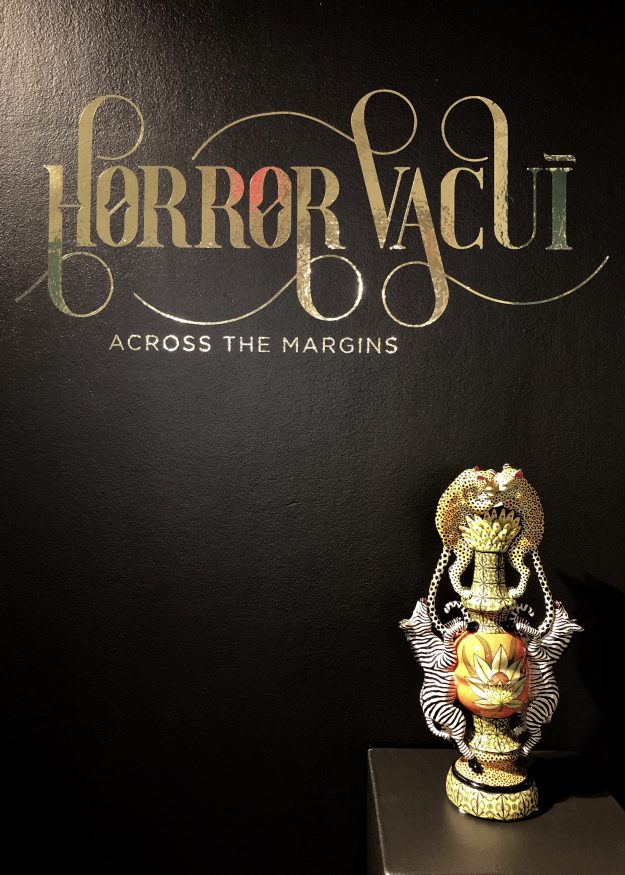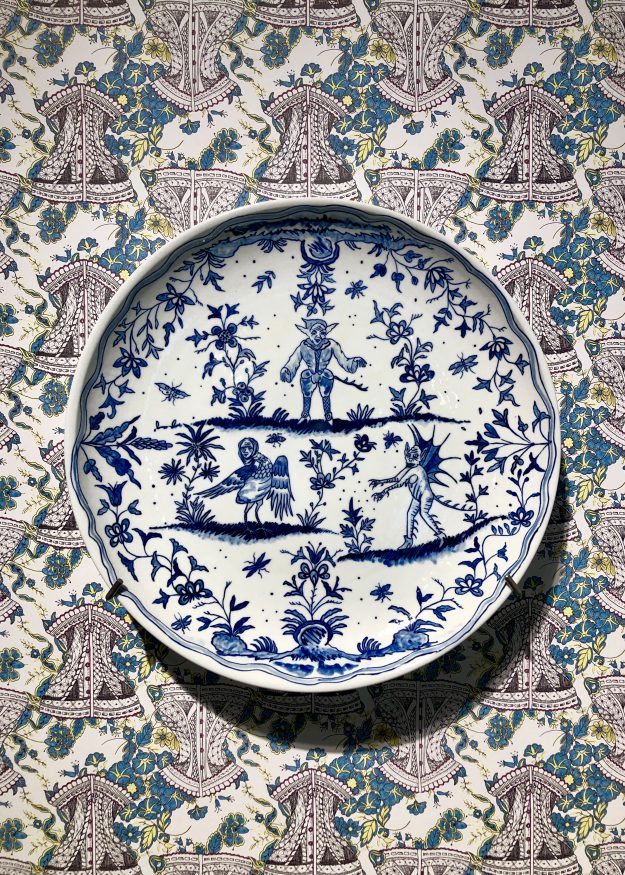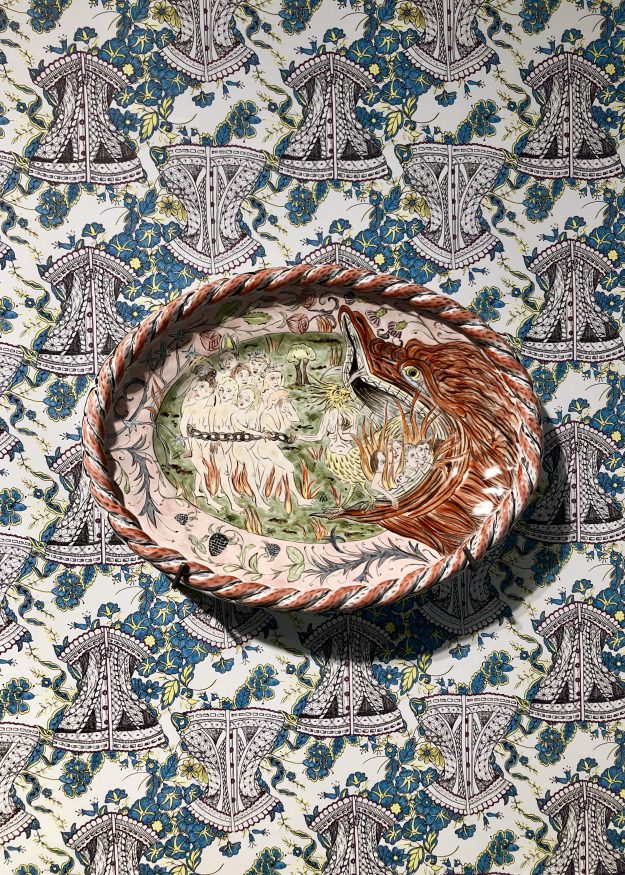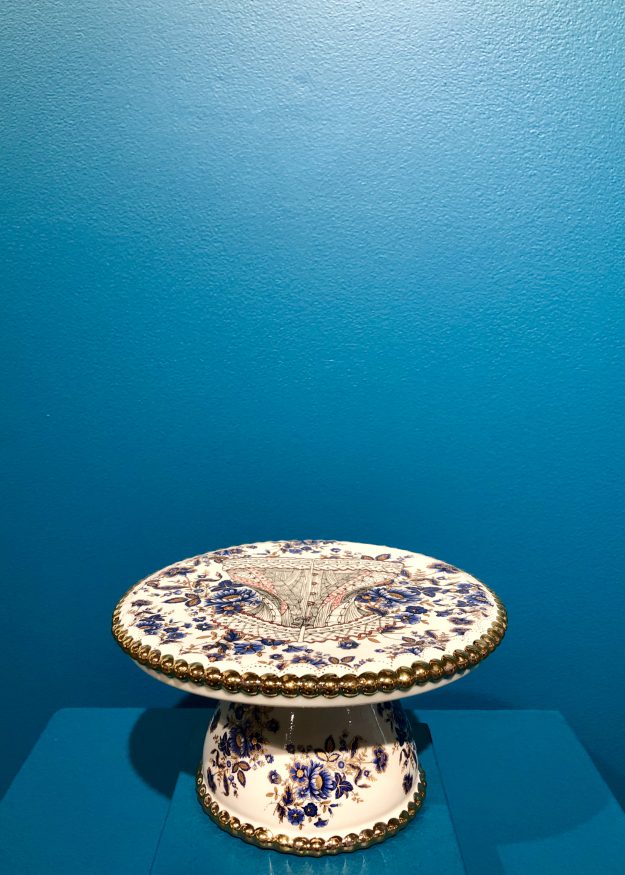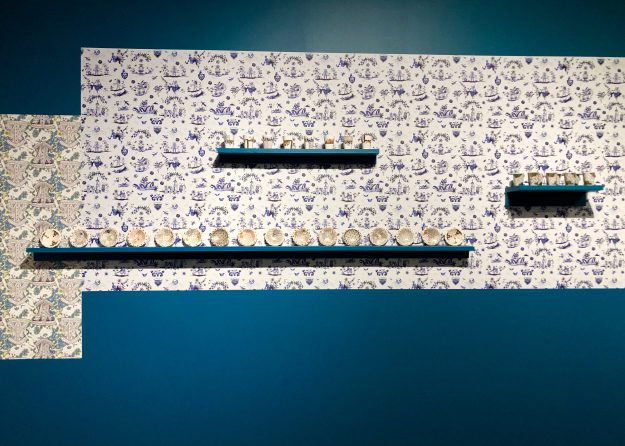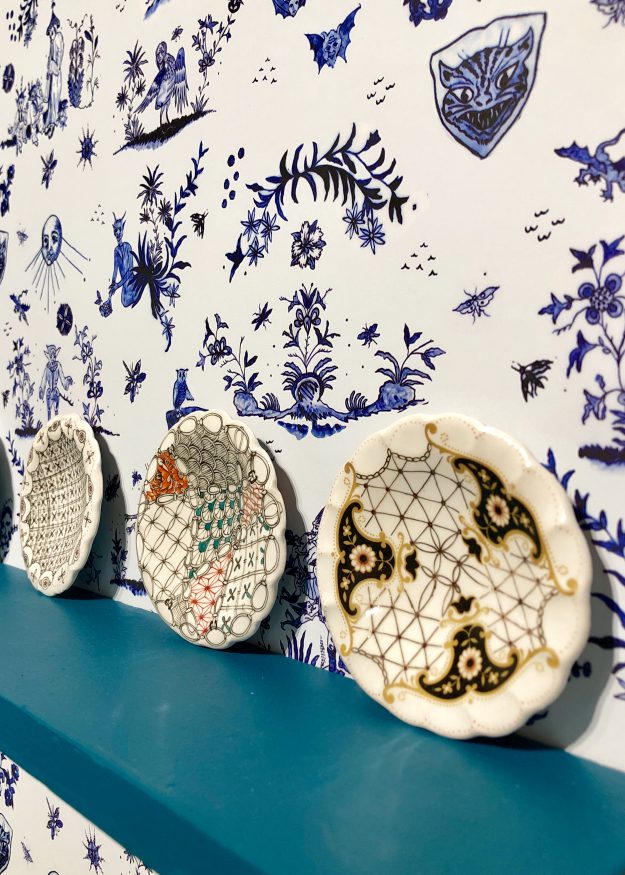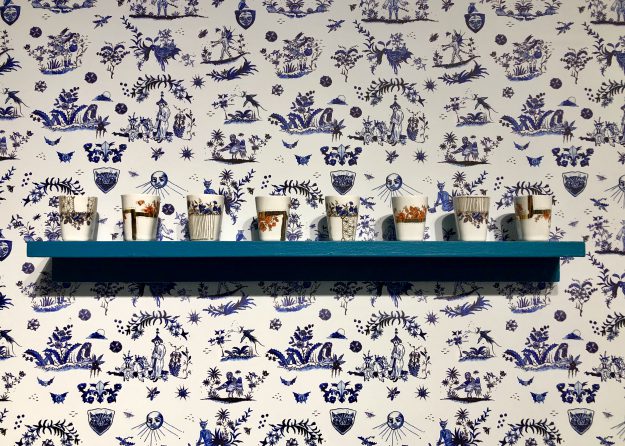Mario Praz, an Italian-born critic, used a Latin phrase, horror vacui, to confront the Victorian fetish of visual clutter. Since that time, more than 100 years have passed with Minimalism as sentry, guarding the margins of good taste in design. High culture has been mostly synonymous with restraint. However, the rabble has been known to bubble up from time to time: consider the Ashcan school of painting, the Maximalism movement of the ’70s, the more recent visual cacophonies of Sarah Sze, and the 2015 curatorial concept, coined by Kaloust Guedel, Excessivism.
As a species, we seem to always bounce between the margins of excess and restraint in pursuit of balance. The same movement is present in our politics and our psychology. These margins of extremes are seemingly always reflected in our art, regardless of which side of the abyss we find ourselves. Horror Vacui: Across the Margins, curated by Jill Foote-Hutton, is a celebration of visual excess, as much as it is also an examination of it and a reflection of our world.
Every artist in the exhibition embraces visual texture, high contrast, and chromatic saturation to express layers of content. Any sampling of their surface work rewards the viewer with a tome of formal or narrative dialogue. The physical space will be divided into two spaces that will work in concert. An internal chamber, quiet with negative space, will provide mental and physical room for reflection. This “room” will be bounded by a narrow and visually dense external hallway, with walls bearing patterns designed by each maker. The works are paired with the intention of forcing a deliciously crowded conversation.
Horror Vacui: Across the Margins is a collaboration between the artists, the curator, and NCC’s exhibitions team. Each maker was invited to explore a category they were already subject to and encouraged to go further. They have also put their trust in having their work on display in a way that will potentially alter the intended perception, if only slightly. After all, every visual cue we take in is informed by the ground on which it stands.
The dense presentation of artists includes, from South Africa, Ardmore Ceramic Art (courtesy of Pascoe & Company in Miami, Florida), with additional objects by Patrick Coughlin, April D. Felipe, Benjie Heu, Lindsay Montgomery, Virgil Ortiz, Yana Payusova, Melanie Sherman, Molly Uravitch, and Valerie Zimany. The planned visual display is intended to exacerbate and inspire tensions in the exhibition space. At what distance does an intimate viewing become too close for comfort? When we are overwhelmed, what truths are revealed?

